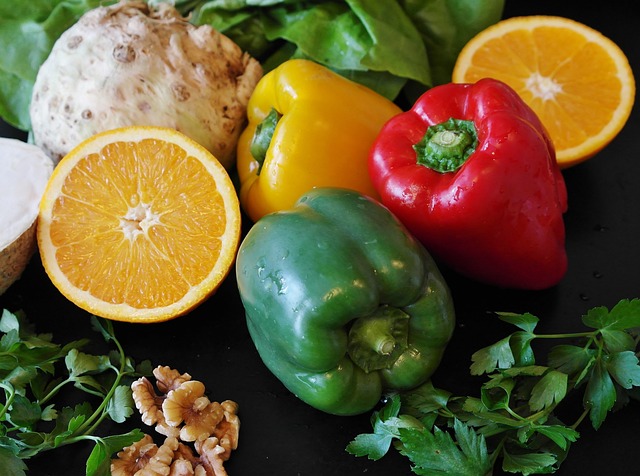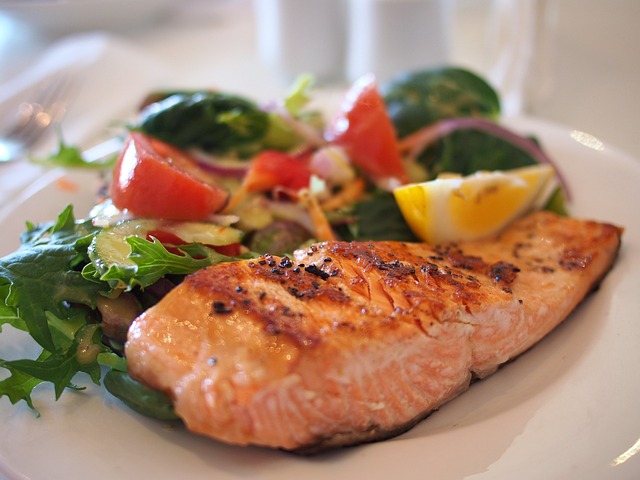Easy Ways to Incorporate Nutrient-Rich Foods into Your Diet
Introduction:
Maintaining a balanced diet rich in essential nutrients is vital for overall health. In Indian cuisine, there are abundant options of nutrient-rich foods that can be seamlessly integrated into everyday meals. This article aims to offer practical and appetizing suggestions on how to incorporate these nutrient-packed ingredients into your Indian diet, promoting both taste and wellness.
1. Embrace Whole Grains:
Whole grains like brown rice, quinoa, and millets are brimming with fiber, vitamins, and minerals. Swap refined grains with their whole counterparts in staples such as roti, dosa, and khichdi to amplify their nutritional value and support digestive health.
2. Amplify Vegetable Intake:
Vegetables are nutritional powerhouses, offering an array of essential nutrients. Integrate colorful veggies such as spinach, tomatoes, bell peppers, and carrots into curries, stir-fries, and salads to enhance both flavor and nutrition in your meals.
3. Harness the Power of Legumes:
Legumes and pulses like lentils, chickpeas, and black beans are rich sources of protein, fiber, and micronutrients. Traditional Indian dishes such as dal, chana masala, and rajma are excellent vehicles to include legumes and pulses, providing numerous health benefits.
4. Incorporate Healthy Fats:
Nuts, seeds, and oils harbor healthy fats crucial for brain health and hormonal balance. Add almonds, walnuts, flaxseeds, and chia seeds to breakfast smoothies, salads, and snacks to boost omega-3 fatty acid intake and support cardiovascular health.

5. Integrate Dairy Products:
Dairy products such as yogurt, paneer, and buttermilk are packed with calcium, protein, and probiotics. Enjoy homemade yogurt with fresh fruits, incorporate paneer into curries and salads, and indulge in buttermilk with meals to bolster gut health and nutrient intake.
6. Harness the Flavor of Herbs and Spices:
Herbs and spices not only elevate the taste of Indian dishes but also offer numerous health benefits. Utilize turmeric, ginger, garlic, cinnamon, and cumin liberally in cooking to bolster immunity, reduce inflammation, and aid digestion.
7. Opt for Fresh, Seasonal Produce:
Prioritize fresh, seasonal fruits and vegetables to maximize nutrient content. Frequent local markets or farm stands to procure fresh produce, infusing meals with optimal flavor and nutrition.
8. Experiment with Healthful Cooking Techniques:
Explore healthful cooking methods such as steaming, grilling, and baking to retain nutrient integrity. Minimize deep-frying and excess oil usage to slash calorie intake and promote heart health.
9. Prioritize Hydration:
Adequate hydration is crucial for overall well-being. Ensure ample water intake throughout the day and include hydrating foods like cucumbers, watermelon, and oranges to maintain optimal hydration levels and support bodily functions.
10. Cultivate Mindful Eating Habits:
Practice mindfulness while eating, focusing on hunger and fullness cues. Eliminate distractions like television or smartphones to prevent overeating and foster mindful eating practices.
Conclusion:
Incorporating nutrient-rich foods into your Indian diet is both simple and rewarding. By incorporating these wholesome ingredients and mindful eating practices, you can savor delicious meals that nourish your body and support your health journey. Experiment with diverse flavors and ingredients to create a balanced and vibrant diet that promotes overall well-being.

FAQs on Incorporating Nutrient-Rich Foods into Your Indian Diet:
1. Why is it beneficial to include whole grains in my Indian meals?
Whole grains are rich in fiber, vitamins, and minerals, supporting digestive health and providing sustained energy. By substituting refined grains with whole grains in traditional Indian dishes, you enhance their nutritional profile and contribute to overall well-being.
2. How can I increase my vegetable intake while cooking Indian cuisine?
Adding a variety of colorful vegetables like spinach, tomatoes, and bell peppers to curries, stir-fries, and salads not only enhances flavor but also enriches your meals with essential nutrients, promoting better health.
3. What advantages do legumes and pulses offer in Indian cooking?
Legumes and pulses such as lentils, chickpeas, and black beans are excellent sources of protein, fiber, and micronutrients. Incorporating them into classic Indian recipes like dal and chana masala boosts nutritional value and aids in feeling full and satisfied.
4. What are some ways to include healthy fats in my Indian diet?
Nuts, seeds, and oils provide essential healthy fats crucial for brain function and heart health. Incorporating almonds, walnuts, and flaxseeds into dishes or using heart-healthy oils like olive oil in cooking are simple methods to elevate healthy fat intake.
5. Which dairy options can I incorporate into my Indian meals?
Yogurt, paneer, and buttermilk are common dairy components in Indian cuisine. Enjoying homemade yogurt with fresh fruits or incorporating paneer into curries and salads are delicious ways to include dairy while supporting gut health.

6. How can I make the most of herbs and spices in Indian cooking?
Herbs and spices like turmeric, ginger, and garlic not only enhance flavor but also offer numerous health benefits. Utilizing them generously in cooking supports immunity, reduces inflammation, and aids digestion.
7. Where can I find fresh, seasonal produce for my Indian recipes?
Local markets or farm stands are excellent sources for fresh, seasonal fruits and vegetables. Prioritizing fresh produce ensures optimal nutrient content and adds vibrancy to your Indian dishes.
8. Which cooking techniques are best for preserving nutrients in Indian dishes?
Opt for health-conscious cooking methods such as steaming, grilling, and baking to maintain nutrient integrity. Reducing deep-frying and excessive oil usage helps retain nutritional value and promotes heart health.
9. How much water should I drink daily to stay hydrated?
Aim for at least eight glasses of water per day and include hydrating foods such as cucumbers and watermelon in your diet to support hydration levels and bodily functions.
10. How can I develop mindful eating habits within an Indian culinary context?
Practice mindfulness while eating, paying close attention to hunger and fullness cues. Minimize distractions during meals to prevent overeating and foster a deeper connection with your food and body.
Powered by Froala Editor





Leave a Reply